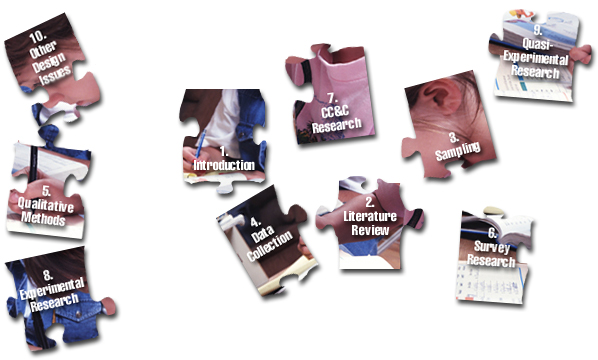On-line Activities
 The Research Article
The Research Article
|
Youth Violence and the Urban
School Response
Abstract
To examine how urban schools have responded
to the threat of youth violence, we interviewed 64 school administrators--in
most cases, principals-- from high, middle, and elementary schools in the
five largest urban areas of Massachusetts. Consistent with other research,
we found that the urban schools in our sample offer numerous programs and
activities aimed at preventing or resolving violent student behavior, aside
form repressive law enforcement controls. Most such measures are located
primarily at the high school level; few in the elementary schools. Similarly,
after-school activities are offered by most of the high and middle schools,
but are almost completely lacking in the elementary schools. Moreover,
where they exist, such after-school programs are usually available to students
on a selective basis. These differences between elementary versus middle
and high schools are explained in terms of the perspectives of school administrators
regarding their students: at the elementary school level, students are
regarded as victims of violent media exposure and family conflict; by the
time they reach the middle and high schools, however, student are more
likely viewed as the perpetrators of violence.
Levin, J., & Johnson, H.B. (1997).Youth
violence and the urban school response. Journal of Research in Education,
7, 3-7. |
|
Using the abstract and title provided
above; identify the participant(s), variable(s) under study, potential
extraneous variable(s), research question, research hypothesis, and null
hypothesis.
Using the same grouping from Module
1, each group should discuss the title and abstract provided above and
answer the following:
a. What are the variables or constructs
of interest?
b. Create a reasonable research question
c. Identify this research question as
descriptive, normative, correlative, or impact. Justify your choice.
d. Create a reasonable research hypothesis
e. Identify this research hypothesis
as inductive or deductive. Justify your choice.
f. Create a reasonable null hypothesis
g. Identify extraneous variables that
may be present (try to limit these to 3)
 E-mail your group work
to Dr. Janiak on or before
12 a.m., May27th.
E-mail your group work
to Dr. Janiak on or before
12 a.m., May27th.
 Generating Research Questions
Generating Research Questions
1. Based on class discussions,
personal experience, prior knowledge, and the text, identify a research
question.
2. Using the same grouping
from Module 1, each group should discuss their areas of interest and
generate a research question.
NOTE:
Please be advised that you will work within this same group until
the end of the semester unless you have concerns about its composition
and would like to switch. If you have concerns, please talk to Dr.
Janiak before May 27th. Dr. Janiak will assume that this grouping
is okay if he does not hear from you on or before that date.
 E-mail your group work to
Dr. Janiak on or before 12a.m.,May
27th.
E-mail your group work to
Dr. Janiak on or before 12a.m.,May
27th.
 Exercise 1
Exercise 1
A teacher has observed a high degree
of anxiety that is aroused by classroom tests and believes that this has
an adverse effect on students' performance. Furthermore, the teacher has
noted that when students are given an opportunity to write comments about
objective questions, their test performance seems to improve. The teacher
reasons that this freedom to make comments must somehow
serve to reduce anxiety and, as a result, the students make better scores.
Based on this scenario:
1. Identify the variables/construct
of interest
2. Create a reasonable research question
3. Identify your research question
as descriptive, normative, correlative, or impact.
4. Create a reasonable research hypothesis
5. Identify your research hypothesis
as inductive or deductive
6. Create a reasonable null hypothesis
7. Identify extraneous variables that
may be present
 Email your group work on
to Dr. Janiak
under the heading, "Module 2 Exercise 1", on or before 12
a.m., May 27th.
Email your group work on
to Dr. Janiak
under the heading, "Module 2 Exercise 1", on or before 12
a.m., May 27th.
 Exercise 2
Exercise 2
Cognitive Theory applied to
the notion of reading comprehension. Interactive nature of reading and
the constructive nature of comprehension. Readers use their existing
knowledge and integrate this with new knowledge to actively construct
meaning from the text. In addition, good readers possess a set of strategies
that they use to make sense of text and to foster and maintain
their understanding. One of
the important strategies used in reading is the drawing of inferences
to fill in details omitted in the text.
Based on this scenario:
1. Identify the variables/construct
of interest
2. Create a reasonable research
question
3. Identify your research
question as descriptive, normative, correlative, or impact.
4. Create a reasonable research
hypothesis
5. Identify your research
hypothesis as inductive or deductive
6. Create a reasonable null
hypothesis
7. Identify extraneous variables
that may be present
 Email your group work on to
Dr. Janiak under the heading, "Module 2 Exercise
2 ", on or before 12 a.m., May 27th.
Email your group work on to
Dr. Janiak under the heading, "Module 2 Exercise
2 ", on or before 12 a.m., May 27th.
 Special Assignment for Group 9 Only
Special Assignment for Group 9 Only
1. For this activity, make
sure that you have your assigned grouping. If you don't know your group,
first click here to check. Then, if you
are not on the list, please call Dr. Janiak as soon as possible.
2. Outline Chapter 10 (pafes
253-274) using the format of Chapter 1 outline from Module 1.
 Email your group work on to
Dr. Janiak under the heading, "Sampling",
on or before 12 a.m., May 27th.
Email your group work on to
Dr. Janiak under the heading, "Sampling",
on or before 12 a.m., May 27th.
|


